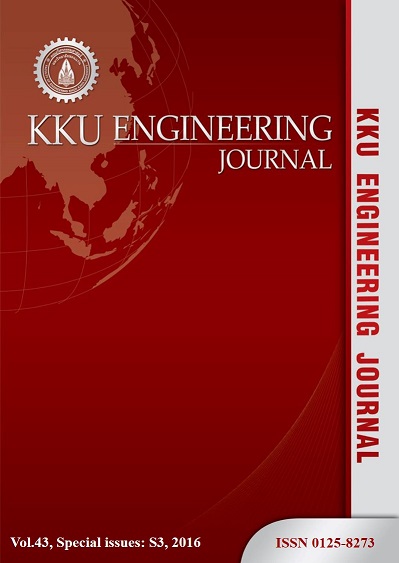Fragility curves of reinforced-concrete buildings damaged by the 2004 tsunami
Main Article Content
Abstract
The December 26th, 2004 Indian Ocean tsunami caused damage to many buildings and killed many people in the South of Thailand. It is important to mitigate the damage by tsunamis in the future. Fragility curves are key parameters for the tsunami risk assessment. The fragility curves are developed by the data of observed building damage in the December 26th, 2004 Indian Ocean tsunami. In this study, the fragility curves are established using a maximum likelihood method and describe the damage probability corresponding to a specific damage level for different inundation heights. Four different damage levels are defined ranging from no structural damage to collapse. The fragility curves for reinforced-concrete buildings are classified into two types: one-story buildings and buildings taller than one story. For one-story buildings under the inundation height of 4 m, the probability of exceeding the damage in primary members is 90%. For buildings taller than one story under the same inundation height, the probability of exceeding the damage in primary members is only about 25%.
Article Details
How to Cite
Foytong, P., & Ruangrassamee, A. (2016). Fragility curves of reinforced-concrete buildings damaged by the 2004 tsunami. Engineering and Applied Science Research, 43, 419–423. retrieved from https://ph01.tci-thaijo.org/index.php/easr/article/view/70820
Section
ORIGINAL RESEARCH
This work is licensed under a Creative Commons Attribution-NonCommercial-NoDerivatives 4.0 International License.



